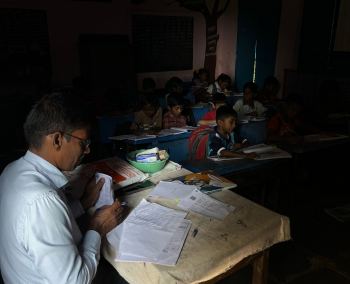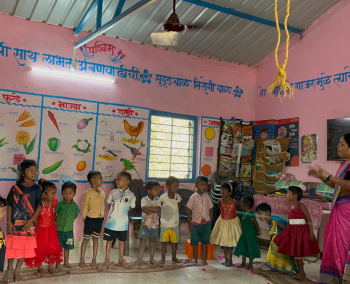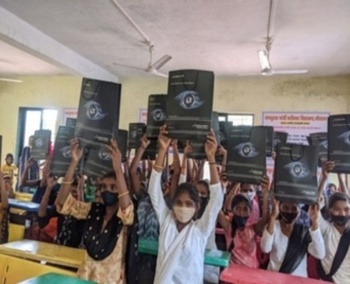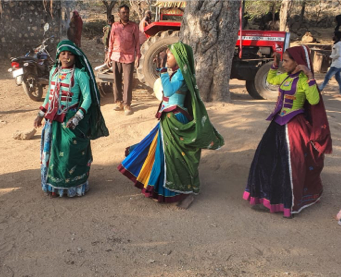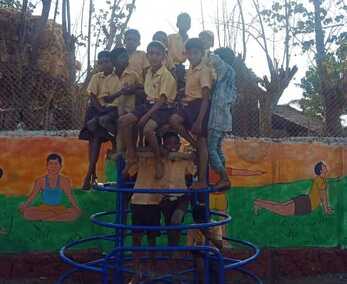The Role of Renewable Energy in Bridging the Urban-Rural Divide
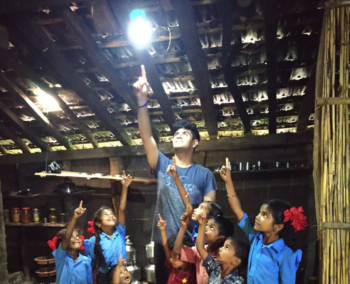
A majority of India’s population (65%) still lives in rural areas. These regions lag behind in infrastructure, education, and healthcare. To top it all, there is no power. It means children struggle to study at night, businesses are dead, and healthcare centers remain under-equipped, failing to deliver in the most critical of times. India has seen massive growth, almost exponentially, in a lot of arenas over the past few decades. However, the contrast between urban and rural areas is stark. Renewable energy in rural areas, if deployed correctly, won’t just light up homes but empower entire communities – and that’s where Project Chirag plays a role.
How Does Renewable Energy in Rural Areas Bring About Change?
1. Lights Up Homes and Schools – Have you tried to study by the dim glow of a kerosene lamp? If not then you’ve been fortunate enough. Sadly, that’s the story of so many children in rural India. Now picture that same child reading under bright LED lights powered by solar energy. Better, right? Access to electricity means better education, brighter futures and endless possibilities.
At ZP Upper Primary School Savroli, solar energy has revolutionized education. Gone are the days of the school when it struggled with unreliable power. It now boasts of a solar-powered computer lab helping students engage in digital learning. The availability of consistent electricity has also enabled music, nutrition, and performing arts programs, fostering a more holistic learning environment.
Additionally, over 70 rural educational facilities have been electrified, creating a climate for engaged education and a brighter future. A solar-powered water heating system now caters to the needs of over 450 tribal students at the Ulhasrao Bhoir Ashramshala, ensuring they have better hygiene and comfort.
2. Empower Small Businesses – Solar-powered irrigation is revolutionizing rural farming. Beyond farming, renewable energy for rural development supports small businesses. A stable and reliable power supply can enable rural entrepreneurs in multiple ways. They could set up cold storage, run textile units, or even start e-commerce ventures.
The Women’s Livelihood Centre under the Bhakta Adarsh Village Project enables women of Gadade with a safe space to build sustainable livelihoods, empowering them with the tools they need to succeed.
3. Improves Healthcare – Rural health centers often struggle with erratic power supply. That means vaccines spoil, and life-saving medical equipment stays unused. Solar-powered clinics ensure healthcare facilities run smoothly, saving lives in the process.
4. Creates Jobs – The renewable energy sector isn’t just about installation. It creates employment in manufacturing, maintenance, and training. Villagers can be trained as solar technicians, boosting local economies and showing how solar power for village development truly works.
5. Reduces Dependence on Fossil Fuels – Switching to solar cuts down the use of diesel generators and firewood, which essentially means the dependence on polluting fossil fuels is less. In rural regions where there is a scarcity of grid electricity solar power is a good alternative. This has multifold benefits, money is saved, air quality is improved and health risks are reduced.
In Pingeman village, where agriculture was constrained by erratic rainfall, and access to electricity was minimal, a solar-powered intervention transformed lives.
- A 7.5HP solar pump now irrigates farmlands
- A 3.5KW solar system powers the village school
- Solar cookers take care of mid-day meals
- And a solar-powered filtration system ensures easy access to clean drinking water.
This initiative has improved livelihoods, education, and health for as much as 450 villagers. A very powerful example of how how solar energy can bring about sustainable rural development.
6. Enhances Digital Connectivity – With reliable power, rural areas can access the internet more easily. With reliable electricity, villagers can explore digital learning, start online businesses, access telemedicine services, and a lot more.
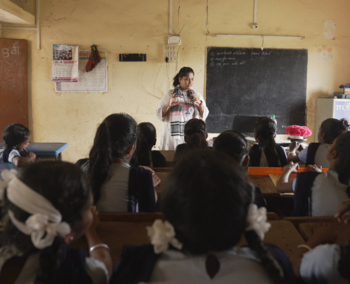
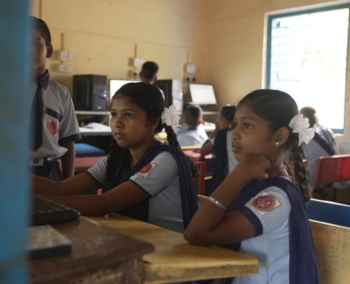
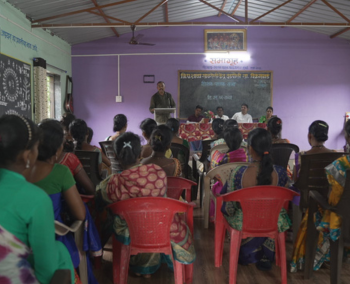
The Role of Renewable Energy in Sustainable Development
Solar energy in rural areas in India is a must. It’s well known that traditional energy sources like coal and diesel are expensive, harmful and damaging to the environment. Also, it’s really difficult to extend the grid to remote areas. Here is when solar energy steps in. It’s clean, sustainable, and perfectly suited for places where conventional electricity can’t reach.
A Story Of Transformation Through Solar Energy In Rural Areas In India
In Karjat, Maharashtra, Anganwadis are extremely vital to early childhood education and community development. However, a lot of these centers struggled with poor infrastructure, unreliable electricity. Additionally there was a lack of other essential resources as well. Chirag Rural Development Foundation, with support from Alleima, launched a comprehensive intervention across 20 Anganwadi centers.
Here’s what was done under the initiative—solar energy solutions were introduced, ensuring a consistent power supply. Smart TVs were introduced for digital learning, and water filtration units provided clean drinking water. Additionally, Anganwadi workers received training to effectively use these tools, enhancing the overall learning experience for children.
Impact:
- 1,176 lives positively impacted
- 10 kW solar power generated
- 8,000 kg of CO₂ neutralized annually
- Improved learning environment and school readiness
This initiative has not only improved early childhood education but has also empowered the local community with better resources and opportunities, demonstrating the transformative power of solar energy in rural India.
Challenges in Rural Electrification
Although there has been significant progress but rural electrification in India still faces several obstacles. Lack of proper infrastructure, high costs, and unreliable power grids are often the most common ones that leave villages in a fix. In addition, the harsh weather conditions, difficult terrain, and economic constraints further worsen the situation and complicate access to energy. Amidst all these challenges, solar power emerges as the best alternative and sustainable solution. However, it’s important to note that scaling these initiatives calls for continued investment, awareness in the community, and technological advancements as well.
How Project Chirag’s Initiatives In Renewable Energy In Rural Areas Making A Difference?
Bringing solar energy in rural areas in India- That’s what we strive to do at Project Chirag. There are areas even today that don’t have access to power supply that’s stable and reliable. Our work focuses on providing solar-powered solutions to such villages.
What We Do?
- Solar Home Lighting Systems: Giving families a safe and sustainable alternative to kerosene lamps.
- Community Solar Grids: Powering entire villages through renewable energy.
- Training Programs: Teaching rural youth to install and maintain solar panels, creating local employment.
Every solar energy project donation we receive goes directly towards electrifying villages and transforming lives.
How Can You Help?
- Donate to a Solar Project: Your smallest contribution could help light up a home or power a school, thus enabling a child’s future
- Let Others Know: Spread the word, talk about it. The more people know and support, the bigger the impact.
- Join Us: Whether it’s raising funds, fieldwork, or advocating for change. We have something for everyone who wishes to get involved.
Access to reliable power supply goes far beyond convenience. It opens doors to varied opportunities in the underserved regions of the country. More importantly, the role of renewable energy in sustainable development is about dignity, opportunities for a better future.
Let’s come together to bring hope and light to create a lasting change across villages in India.

